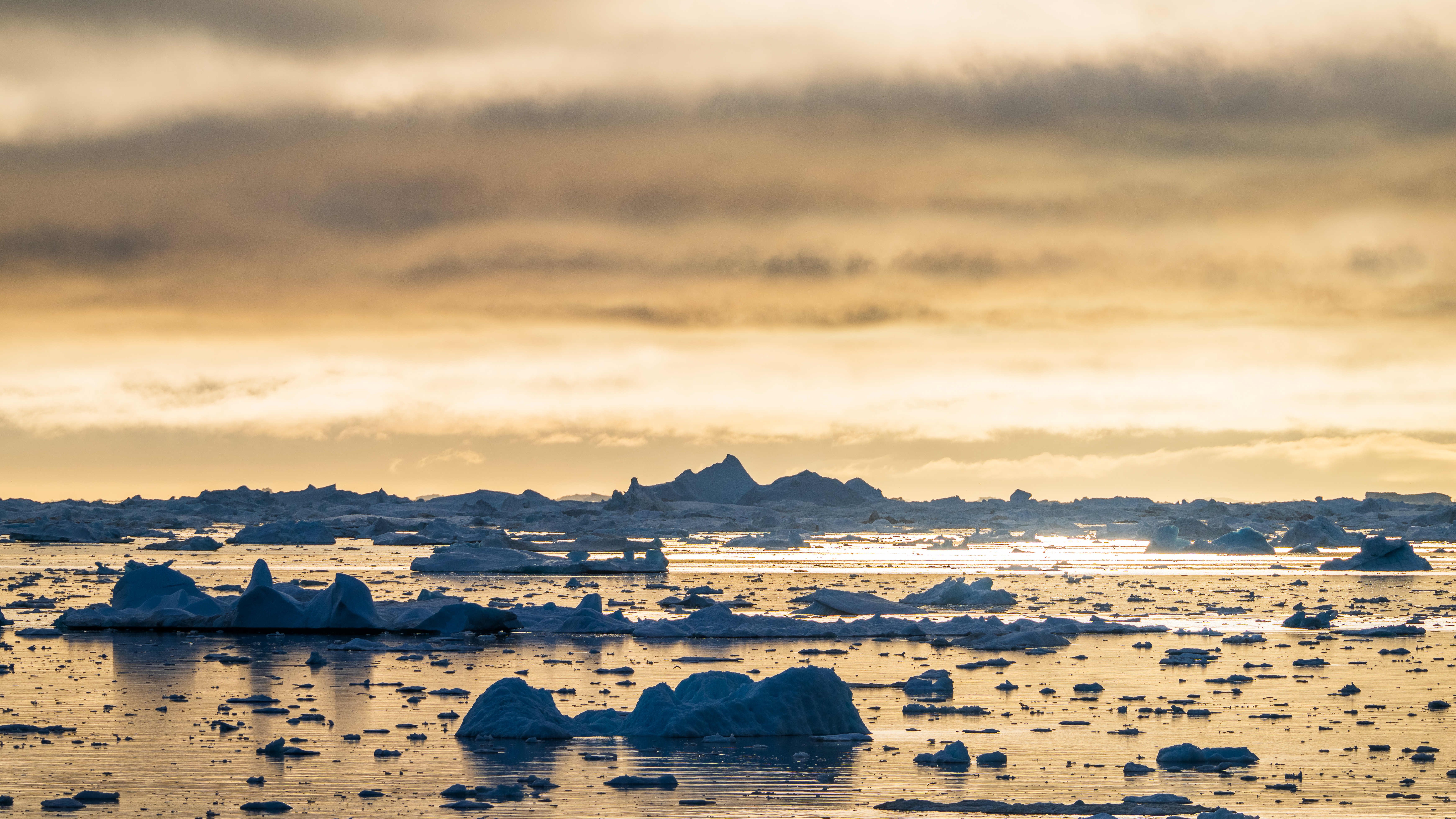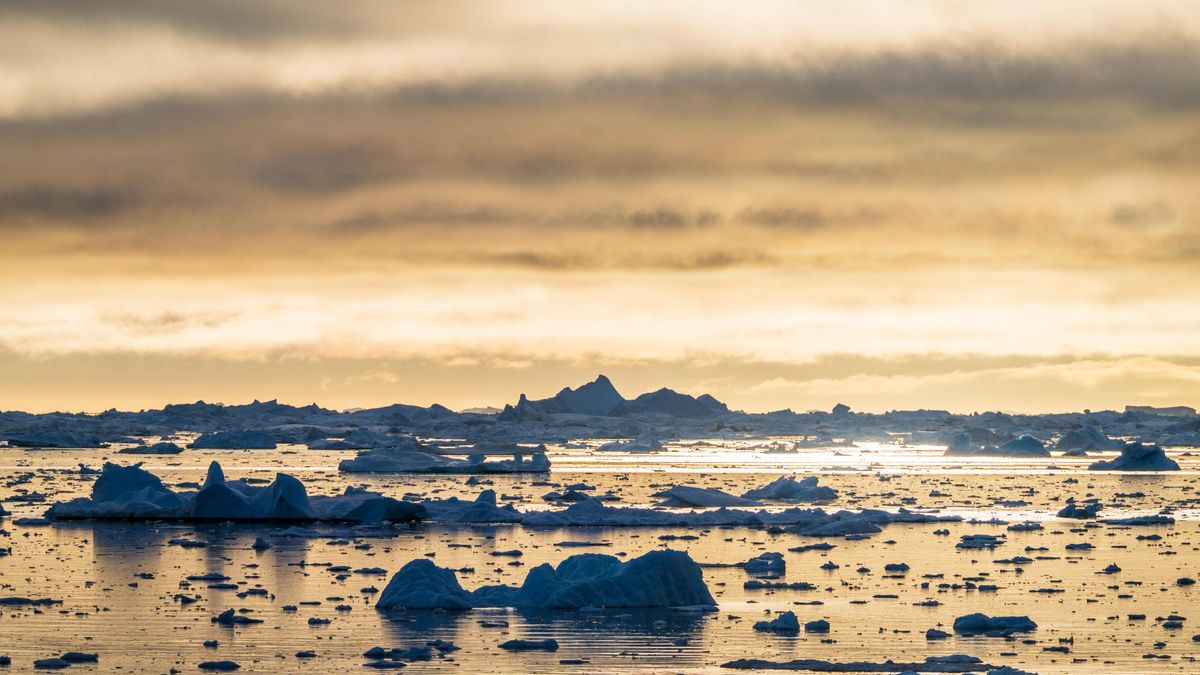
Greenland’s gigantic ice sheet is inching toward an irreversible tipping point, after which it will tumble into the ocean, a new study warns.
Just 3.6 degrees Fahrenheit (2 degrees Celsius) of further warming could be enough to trigger a collapse of the world’s second-largest ice sheet, causing sea levels to rise by 23 feet (7 meters) and sowing havoc across global ecosystems.
Scientists have long observed the accelerating decline of Greenland’s ice cover — with the sheet losing an estimated 33 million tons (30 million metric tons) of ice every hour. But researchers weren’t sure exactly when the ice sheet could enter a terminal death spiral. Now, a new study published Jan. 9 in the journal The Cryosphere has revealed that, if the worst warming estimates come true, this irreversible tipping point could come by the turn of the century.
Freshwater reserves under threat
Greenland’s ice sheet is one of only two permanent ice sheets on Earth, the other being the Antarctic ice sheet. It is nearly three times the size of Texas, covering roughly 656,000 square miles (1.7 million square kilometers), according to the National Snow and Ice Data Center (NSIDC) in Colorado.
The Greenland and Antarctic ice sheets make up more than 70% of Earth’s freshwater reserves, according to the NSIDC. Both have been losing mass at an accelerated rate due to human-caused climate change, and the sheets have lost a combined 6.9 trillion tons (6.3 trillion metric tons) of ice since 1994, according to a 2021 study.
Yet despite these significant losses, the entirety of the sheet has yet to enter a state where irreversible collapse is inevitable, according to scientists, especially if drastic cuts to carbon emissions are made in time.
To estimate when a tipping point for Greenland’s ice sheet could arrive, the researchers designed a climate model that simulated the future of the ice sheet’s surface mass balance — meaning the difference between snow buildup and loss due to melting — in different warming conditions.
The model’s results were chilling, finding that a tipping point for the sheet will be reached when roughly 230 gigatons (253.5 billion tons) of ice is lost in a single year — a 60% decrease from the ice sheet’s pre-industrial equilibrium.
This scenario is tied to a global temperature increase of 6.12 F (3.4 C) above pre-industrial levels. The planet is currently hovering around 2.65 F (1.47 C) hotter in 2024 than in the late 19th century, but the most pessimistic projections suggest it could hit 3.4 C of warming by 2100 under current plans.
If the sheet were to melt completely, the accompanying sea level rises would cause devastation for the billions who live along the world’s coasts, and and this rise along with warming temperatures would have serious implications for globally vital Atlantic ocean currents.
Greenland’s trend of accelerated melting is also occurring in icy regions all over the world. Between 2000 and 2019, Earth’s glaciers lost an average of 294 billion tons (266 billion metric tons) of mass per year, accounting for 21% of observed sea-level rise across that time period.
Another study published in 2021 estimated that Earth is losing enough ice every year to cover a frozen area the size of Lake Superior.

